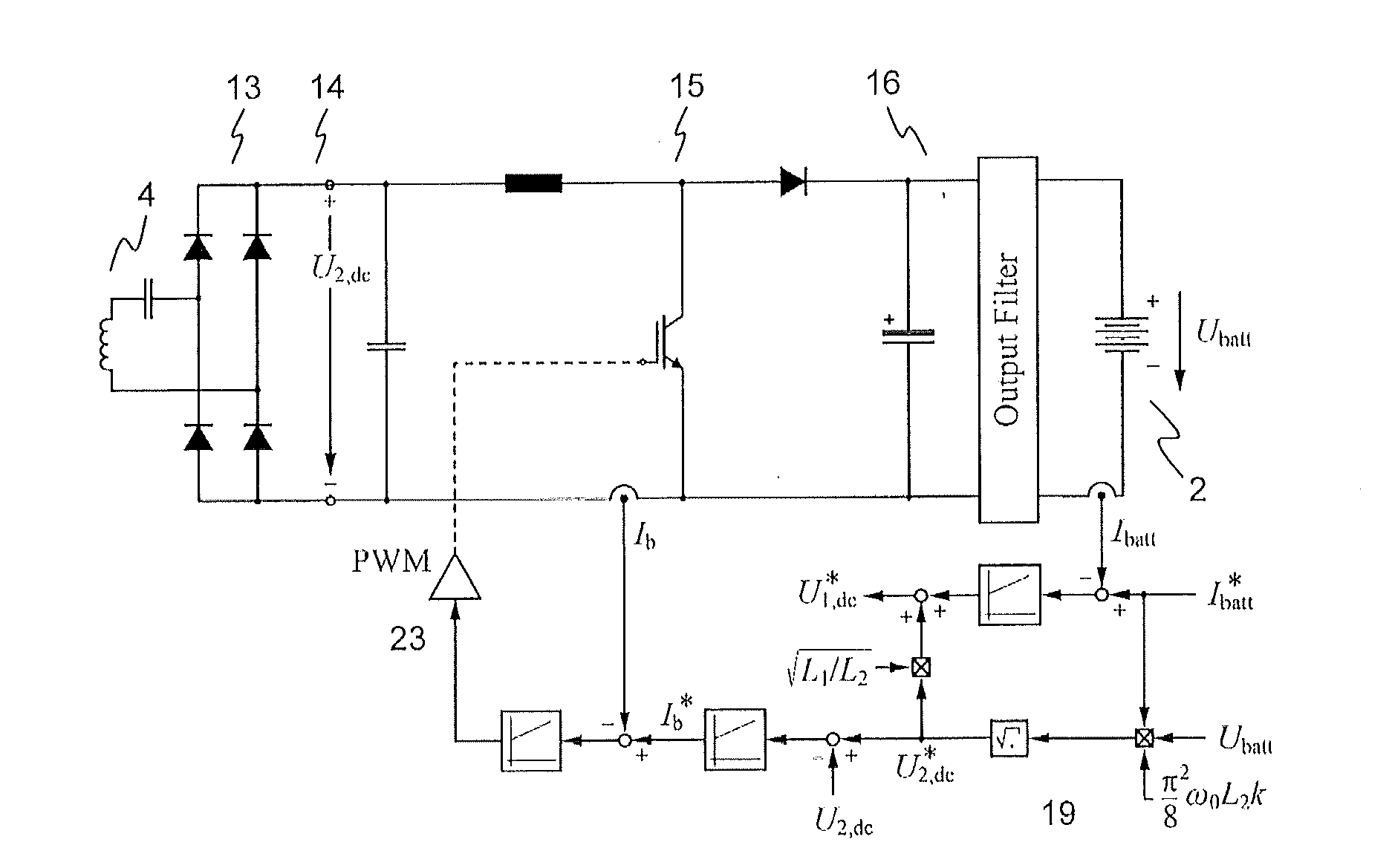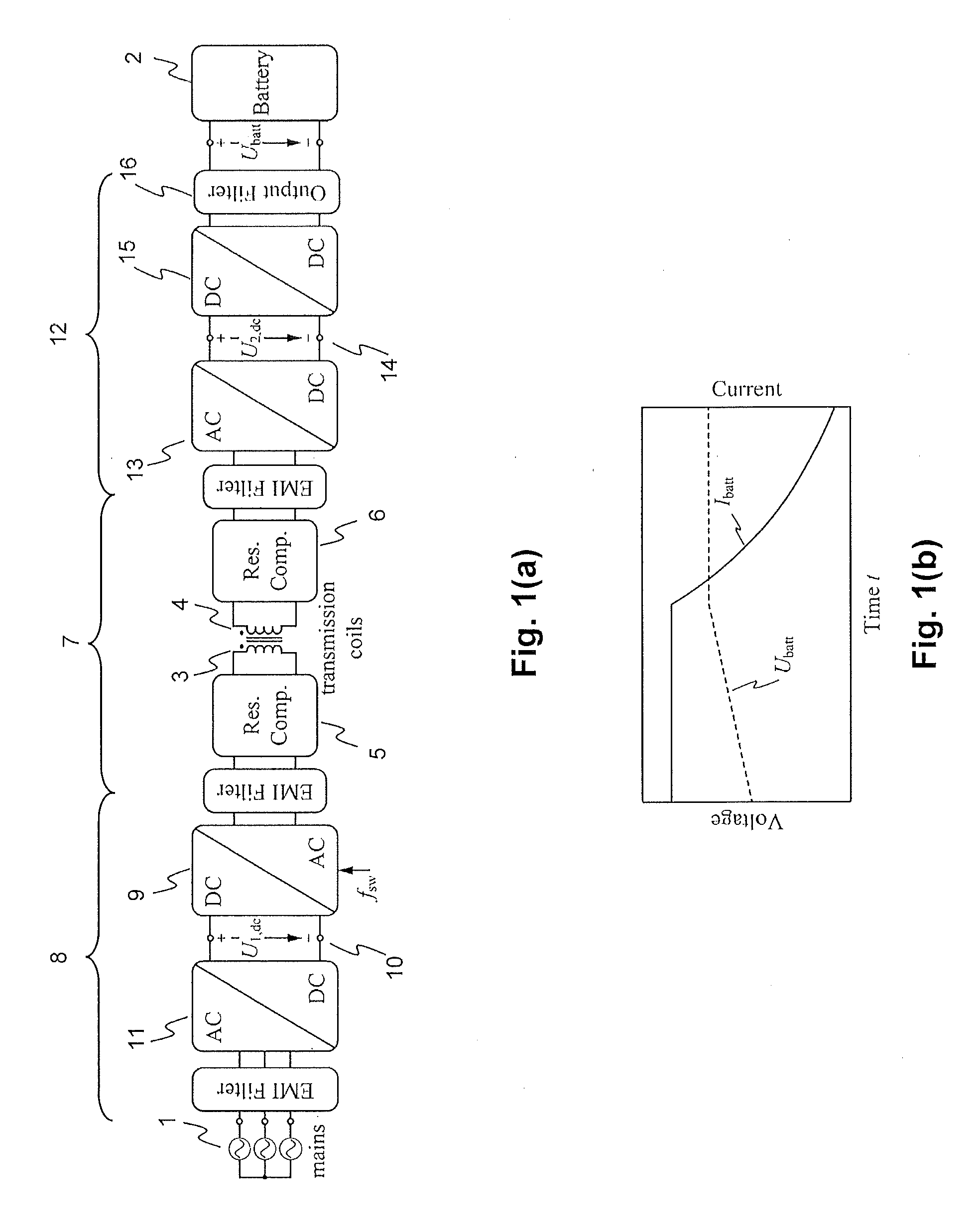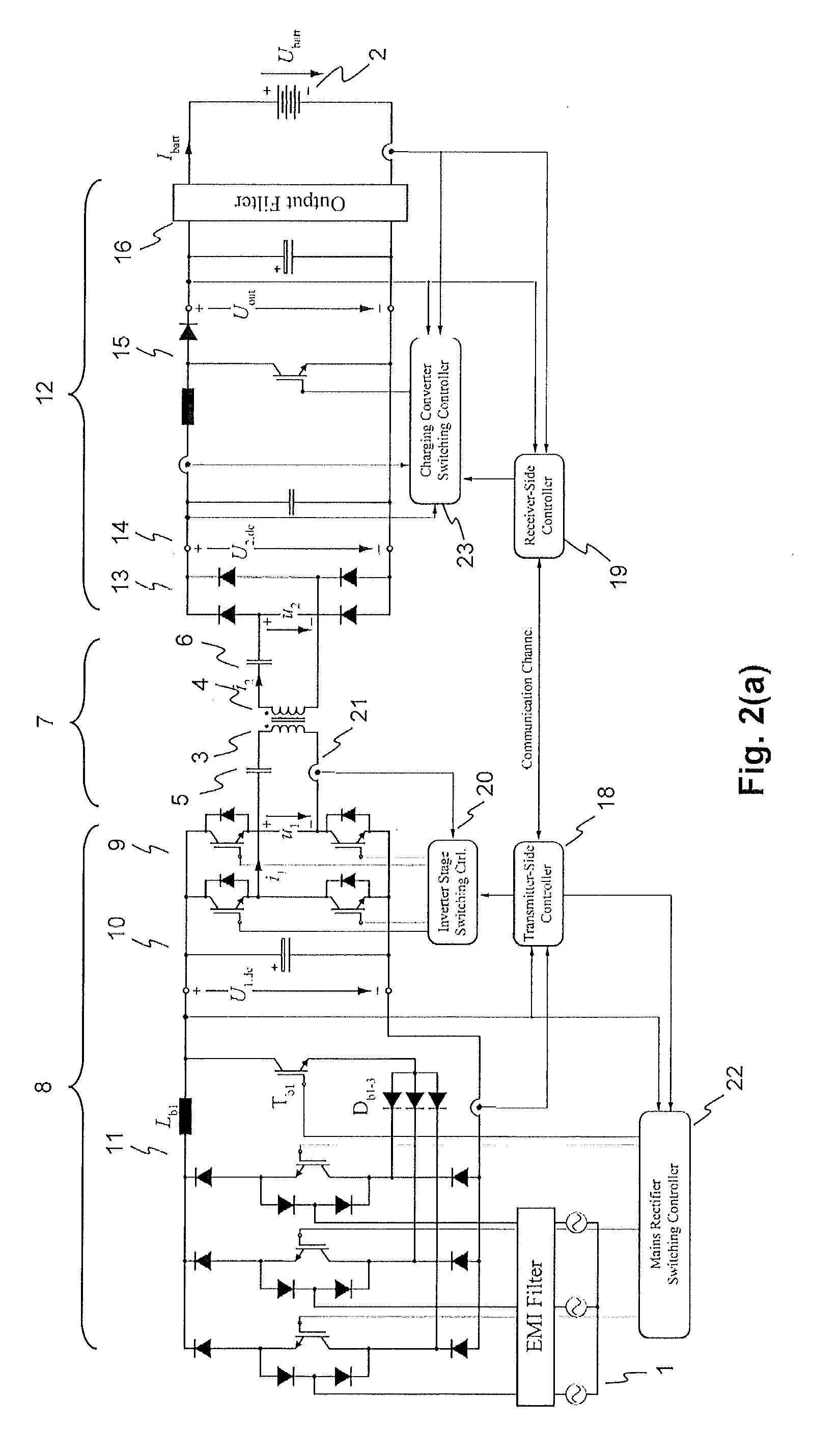Inductive power transfer system and method for operating an inductive power transfer system
a technology of inductive power transfer and inductive power, which is applied in the direction of charging stations, electric vehicle charging technology, transportation and packaging, etc., can solve the problems of low switching loss, high leakage flux of this transformer, and additional conduction loss in the resonant circuit, so as to achieve the effect of minimizing switching loss
- Summary
- Abstract
- Description
- Claims
- Application Information
AI Technical Summary
Benefits of technology
Problems solved by technology
Method used
Image
Examples
Embodiment Construction
[0028]Exemplary embodiments of the present disclosure provide a power transfer system, such as an inductive charging system, and a control method that lead to a high efficiency of the power transfer charging process in a wide range of operating conditions, output power and—for a charging system—state-of-charge dependent battery voltage. Exemplary embodiments of the present disclosure provides an inductive charging system that exhibits a large tolerance to coil misalignment and a high robustness with respect to component tolerances and parameter drifts.
[0029]An exemplary embodiment of the present disclosure is directed to an inductive power transfer system, such as a battery charging system, for supplying electrical power from a transmitter-side subsystem connectable to a mains to a receiver-side subsystem connectable to a load. The system includes a transmitter coil and a receiver coil, a transmitter-side power converter having a mains rectifier stage to power a transmitter-side dc-...
PUM
 Login to View More
Login to View More Abstract
Description
Claims
Application Information
 Login to View More
Login to View More - R&D
- Intellectual Property
- Life Sciences
- Materials
- Tech Scout
- Unparalleled Data Quality
- Higher Quality Content
- 60% Fewer Hallucinations
Browse by: Latest US Patents, China's latest patents, Technical Efficacy Thesaurus, Application Domain, Technology Topic, Popular Technical Reports.
© 2025 PatSnap. All rights reserved.Legal|Privacy policy|Modern Slavery Act Transparency Statement|Sitemap|About US| Contact US: help@patsnap.com



